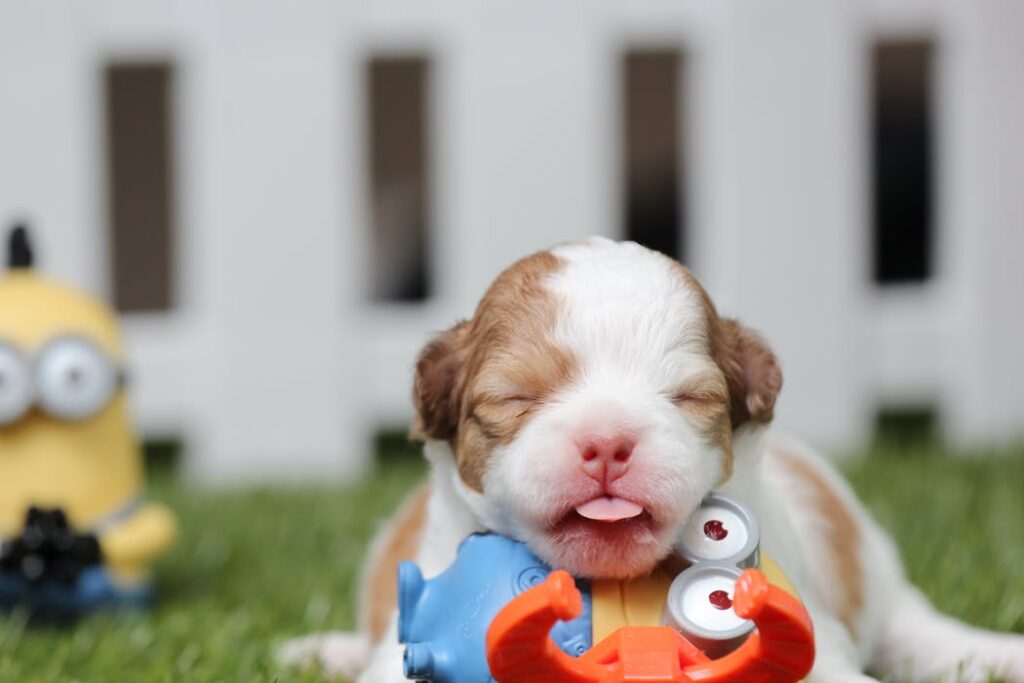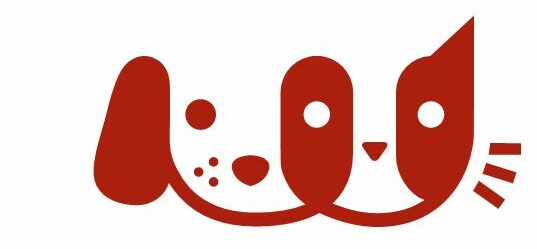Your new puppy will be ready to be picked up soon. It’s super exciting and you and your family can’t wait. But are you really prepared for what’s about to happen? We mean, beyond being ready for loads of cuddles and having an Instagram handle sorted!
Have you thought about where your puppy should sleep, have you set the house rules, decided upon roles & responsibilities amongst the family and puppy proofed the house?
If the answer is no, then keep reading…
What to do before bringing home a new puppy
There are 4 things you need to do before bringing home a new puppy

1. Sleeping arrangements – his bed or yours?
Most fur-parents will agree that the starting point for a puppy should be a crate. Don’t think of it as locking up your new adorable friend in jail. Think of it as providing a safe comfortable place for him to sleep at night – particularly until he is house trained. For more information on how to use a crate see Part 4 of our Puppy Guide – what to expect in the first few weeks.
The placement of the crate is going to have a lot to do with the bigger question – where should your dog sleep as an adult? Outside the house, inside the house or even in your bed?
There’s much debate in this area, but it is worth thinking about it before your puppy arrives – as it takes a lot of persuasion and behaviour modification to change such a big habit, so be aware.
A lot of owners find it comforting and feel that they all sleep better when together. Others say it’s a complete no, no. They are worried about cleanliness, shedding and sleep disturbance.
There have been some studies done that show a minor drop in sleep efficiency, and other research that talks to the increase of oxytocin (the happiness hormone) by being closely bonded with your dog.
In the end, it’s your choice. Some dogs will naturally love being close to you whilst others might prefer their own space. And some human partners will be ok with it, whilst others aren’t! Think long and hard on this one, as it’s a biggie!
2. Setting House Rules
A healthy relationship with your new furry friend is going to be built around some basic discipline for both puppy and yourself!
This is particularly important if there are multiple people or other family members in the house. Everyone needs to be aligned on the rules, otherwise, your puppy is going to become very confused and will soon start taking advantage of the situation.
Even if you are on your own, you still need to consider what kind of rules you are going to put in place for both puppy and yourself – and then stick to them!
Rules for Puppy
- Access all areas – Are there areas within your house or garden that are off limits? If you have certain rooms with breakables or things that could be dangerous for a fully-grown dog, it might be worth setting some no-go zones early.
- Lounging around – can puppy join you on the lounge? Are you happy to have fur everywhere? And given that tiny puppies grow into adult dogs, if you allow your puppy on the furniture now it may not be what you want when he gets older. Perhaps there is a specific piece of furniture that could be his? You could even go to a garage sale and pick something up just for him?
- Sneaky snacks – this is not just about resisting those puppy-dog eyes as he begs for a taste of your delicious dinner. It is also about weight management because obesity in dogs is a real problem. If you are providing scraps under the dinner table, and sneaky treats every time the fridge gets opened, it will become hard to regulate the amount of food your puppy is getting. Don’t forget a lot of human food is not suitable for dogs. So, try to establish some ground rules around where your puppy eats and where your puppy is when you eat. Do you want your dog bothering your dinner guests for food when you are entertaining?
- Basic commands – agree on some words and even hand gestures for basic commands such as sit, stay and come. Jumping up is one of the biggest issues as it is very instinctive for most puppies. So ensure you agree on a “down” command and don’t reward bad behaviour with attention. Training starts from day 1!
- Door etiquette – door manners are also important. How your puppy behaves if someone comes to your front door. And also, how he behaves when you’re carrying things in and out of the house. You don’t want your dog to run away or knock you over. Trainer Kristina Lotz has some great tips on teaching your dog to respect doorways.
Rules for Humans
- Handle with care – this is particularly important for children, who can very easily make handling mistakes. An accidental pull on his tail or ear can result in a painful snip from puppies razor sharp teeth. Teach kids that puppies are different from plush toys and that they should listen and look for feedback from puppy to learn when they are happy or distressed.
- Fair game – toys on the floor, those favourite shoes left in the doorway, a handbag or that towel hanging in the bathroom. If it’s in reach, it’s likely to be chewed and family members need to be aware of this. You can’t stop the chewing behaviour as it is normal for puppies who are teething and exploring, so remove precious items and have some chew toys ready to redirect their behaviour.
- Hitting & yelling – things will go wrong and when they do, hitting or yelling at your puppy is not going to help them understand what they have done wrong. In fact in the immature mind of your puppy, they may think that this is a form of attention and therefore a reward for their behaviour. So, removing puppy from the “fun” situation and having some time out somewhere else is far more effective.
- Feeding time – give them space. Disturbing a puppy whilst they are eating can lead to them becoming overprotective of their food. Let them eat in peace.
- Alone time – we all need some alone time every now and then, and it is especially true for puppies who are learning so much about their new environment. Introducing alone time in their crate is the first step toward preventing separation anxiety.
3. Roles & Responsibilities
Puppies like routines, so a key way to help keep the household stay calm and happy is to agree up front who is responsible for what.
This is obviously more important for families than singles or couples, but what’s important for your puppy is sticking to consistent times of the day, as he will learn to know what to expect – when, and from who.
Think about the following…
- What’s your morning routine?
- And your evening routine?
- Who will do the walking?
- Which person will be the primary teacher?
- Who’s brushing and grooming?
- How about vacuuming up the dog hair?
- And of course, who’s picking up the poop!
4. Puppy-proof your home
This is something you really must do before your puppy arrives. Babies start to crawl around seven months, so you have time to prepare and move everything off the floor! However, Puppies will be off and running as soon as they arrive, so be very prepared.
Put yourself in their position, there’s a new family to get to know, a whole new place to sniff out, maybe a back garden and new neighbourhood noises to get used to. It’s only natural that it will take a few weeks for him to settle in and feel at home.
So literally get down on their level and assess your home, under beds and furniture that you normally wouldn’t think twice about.
- Cables – make sure you don’t have any power cords accessible. Move them, secure them out of reach or have them turned off if your puppy is in that space.
- Small Items – look for small items that he could choke on – like batteries, or decorative items that might get chewed. And if you have small children, toys will be very tempting. So be extra diligent.
- Bags – think about everything that might be in a handbag, gym bag or diaper bag. Sugar-free gum, hand creams – Xylitol is extremely toxic for dogs. Preventive Vet has a complete list of over 700 everyday products that you might have around the house.
- Medications – pills, liquids and supplements need to all be out of reach in cupboards that are above ground level.
- Poisons – if you have children you may have already baby-proofed your home for cleaning products etc. But don’t forget that your puppy may be exploring the garden and garage a lot more than your kids ever have – so put away pesticides, fertilizers, paints, glue, pool chemicals, automotive chemicals etc in a very safe lockable area.
- Plants – whilst you hope your dog has good instincts, you can’t rely on him to not be curious, particularly as a puppy. Pet Poison Helpline has highlighted the Top 10 poisonous plants that can cause problems. If you want to search by plant name or have a visual reference, the ASPCA has an exhaustive list of toxic plants.
- Height Hazards – your puppy may grow into being a flyball champion one day, but whilst he is little, his bones are very fragile so jumping off furniture, steps, cars or even out of your arms is a big “no, no”.
- Trash – the alluring smells of your garbage and recycling bins will be calling puppy constantly. Make sure your bins are secure and can’t easily be knocked over.
- Fences – ensure your outside space is well fenced. Check underneath the fences and around the gates for gaps and soft earth that can be easily dug up. Puppies can be master magicians and easily pull a disappearing act through the smallest of holes!
There’s a lot to do before you bring home a new puppy and the more prepared you are, the more relaxed and enjoyable the experience will be for both of you.

So now you know what to do before bringing home a new puppy. But you are not ready yet as you need to buy the essential items. Read Part 2 of our New Puppy Guide for a checklist of 14 items you need to buy.

We love hearing from you – share with us your puppy proofing tips below.